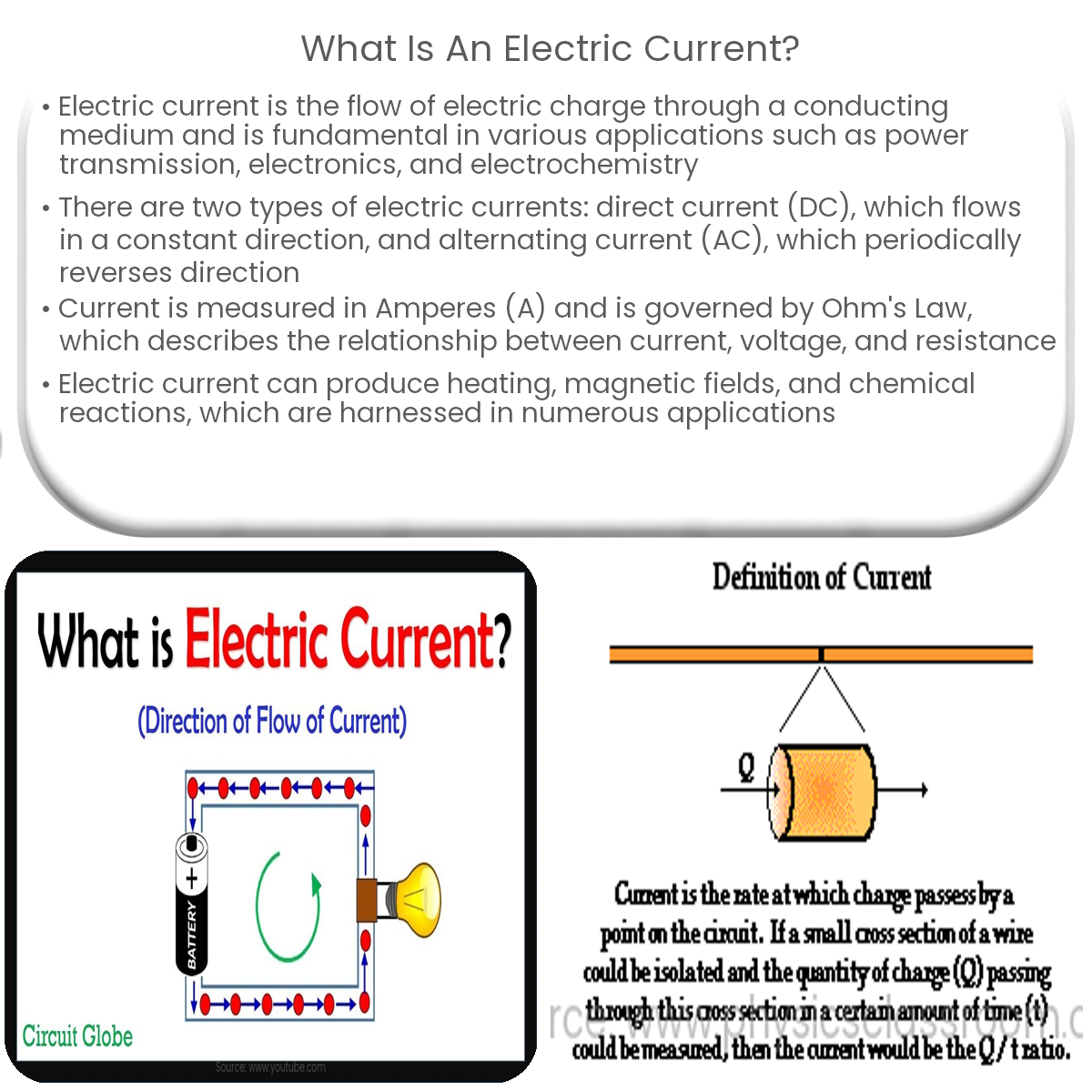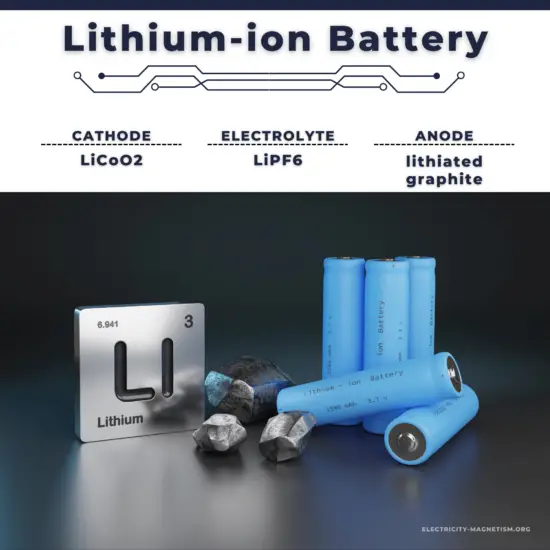An electric current is the flow of electric charge through a conducting medium, such as a wire, and can be either direct (DC) or alternating (AC).
Electric Current: A Flow of Charge
An electric current is the flow of electric charge through a conducting medium, such as a wire or a solution. It is a fundamental concept in the study of electricity and plays a crucial role in various applications, including power transmission, electronics, and electrochemistry.
Types of Electric Current
There are two types of electric currents: direct current (DC) and alternating current (AC).
- Direct Current (DC): In direct current, the flow of electric charge is in a constant direction. Batteries, fuel cells, and solar cells are common sources of DC. Electronic devices, such as mobile phones and computers, typically operate on DC.
- Alternating Current (AC): In alternating current, the flow of electric charge periodically reverses direction. AC is generated by power stations and is the most common type of current used for power transmission and distribution. Household electrical outlets supply AC.
Measuring Electric Current
Electric current is measured in Amperes (A), which is the SI unit for current. One Ampere is defined as the flow of one Coulomb of charge per second (1 A = 1 C/s). Smaller units like milliamperes (mA) and microamperes (µA) are also used to measure currents in electronic devices.
Ohm’s Law
Ohm’s Law is a fundamental principle in the study of electric currents. It states that the current (I) flowing through a conductor between two points is directly proportional to the voltage (V) across the two points and inversely proportional to the resistance (R) of the conductor. Mathematically, Ohm’s Law is expressed as:
I = V/R
Ohm’s Law is essential for understanding and analyzing electrical circuits, as it describes the relationship between current, voltage, and resistance.
Effects of Electric Current
Electric current can produce various effects, such as heating, magnetic fields, and chemical reactions. These effects are harnessed in different applications:
- Heating: The flow of current through a resistive material generates heat due to the collision of electrons with the atoms in the material. This principle is used in devices like electric heaters and incandescent light bulbs.
- Magnetic Fields: A current-carrying conductor produces a magnetic field around it. This phenomenon is the basis for electromagnets and electric motors.
- Chemical Reactions: Electric current can drive chemical reactions in a process called electrolysis. This principle is used in electroplating, metal extraction, and water treatment.
In conclusion, an electric current is the flow of electric charge through a conducting medium. Understanding electric current, its types, measurement, and effects is essential for studying and applying electricity in various fields.




